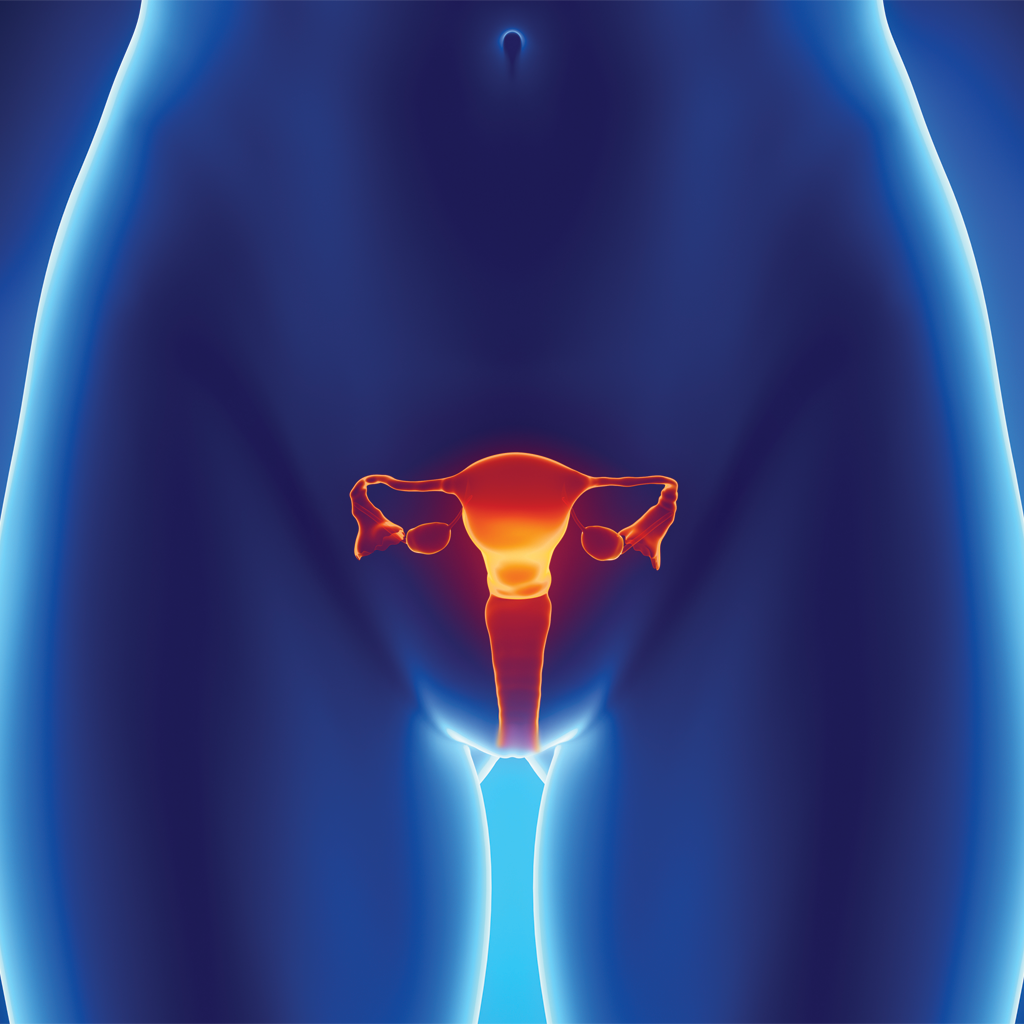Treatment for: Uterine Fibroids
Procedures offered: Uterine Fibroid Embolization

Uterine Fibroid Embolization
Uterine fibroids are non-cancerous tumors that grow inside or around the uterus. They range in size from just under 2 inches to four inches and even larger. Up to 40% of women over the age of 35 will develop fibroids. African-American women may be up to 3 times as likely to develop them.
Fibroids can cause extreme pain, longer-than-normal and heavier-than-normal periods, frequent urination and incontinence. In many cases, hysterectomy (surgical removal of the uterus) or myomectomy (surgical removal of the fibroids from the uterus) may be recommended for women with fibroids, however the American College of Obstetrics and Gynecology now recommends uterine fibroid embolization (UFE) as a non-surgical alternative to hysterectomy.
UFE is a safe, proven and minimally-invasive treatment for uterine fibroids. Unlike hysterectomy, the procedure preserves the uterus, and unlike myomectomy, the fibroids will not return.
During the UFE procedure, a specially trained interventional radiologist uses imaging to guide a small catheter through the body to the blood vessel (artery) supplying the fibroid. The artery is blocked with tiny microspheres, which lodge in the smaller vessels and deprive the fibroid of oxygenated blood. This causes the fibroids to shrink and reduces the associated symptoms.
UFE is performed in less than an hour, requires only a small nick in the skin, and you can return home within 24 hours. Women who undergo UFE have demonstrated a high level of satisfaction and a significant improvement in their quality of life, even over the long term.1,2 In a recent study of four randomized clinical trials comparing UFE to surgical interventions, UFE was associated with less blood loss, a shorter hospital stay and a faster return to work. 3
- Smith WJ, Upton E, Shuster EJ, Klein AJ, Schwartz ML. Patient satisfaction and disease specific quality of life after uterine artery embolization. Am J Obstet Gynecol. 2004;190(6):1697–1703.
- Scheurig-Muenkler C, Koesters C, Powerski MJ, Grieser C, Froeling V, Kroencke TJ. Clinical long-term outcome after uterine artery embolization: sustained symptom control and improvement of quality of life. J Vasc Interv Radiol. 2013;24(6):765–771
- Laughlin SK, Schroeder JC, Baird DD. New directions in the epidemiology of uterine fibroids. Semin Reprod Med. 2010;28(3):204–217
UFE Preparation Instructions
- Please inform us of all medications that you are taking, including herbal supplements, and if you have any allergies, especially to local anesthetic, medications or to contrast (also known as “x-ray dye”).
- You may be advised to stop taking aspirin, nonsteroidal anti-inflammatory drugs (Tylenol, Advil) or a blood thinning medication for a period of time before your procedure.
- Please inform us about recent illnesses or other medical conditions.
- Women who are or may be pregnant should inform us immediately. Many imaging tests such as x-ray are not performed during pregnancy so as not to expose the fetus to radiation.
- Unless otherwise instructed, you may take your usual medications, especially blood pressure medications. These may be taken with some water in the morning before your procedure.
- You may be instructed to refrain from eating or drinking anything for several hours before your procedure.
- You may need to remain for a period of observation after your procedure.
- You will be given a gown to change into before your procedure.
UFE Frequently Asked Questions
Uterine Fibroid Embolization (UFE) is a minimally invasive procedure designed to treat uterine fibroids. By blocking the blood flow to the fibroids, UFE causes them to shrink, providing relief from heavy bleeding, pain, and pressure. Our expert team at North Star Vascular and Interventional is dedicated to helping you find relief and improve your quality of life.
Most women experience significant symptom relief for 3-5 years, and some enjoy benefits even longer. The lasting relief from UFE depends on the size and number of fibroids and individual response to the treatment. Our experts will work with you to ensure the best possible outcome.
UFE is highly effective, with 90% of patients experiencing significant relief from symptoms like bleeding, pain, and pressure. This allows you to get back to your daily life with fewer interruptions. At our clinic, we pride ourselves on delivering top-notch results that help you feel your best.
Yes, uterine fibroid embolization (UFE) is usually covered by most health insurance plans, including Medicaid and Medicare. Our friendly staff can assist with verifying coverage and discussing payment options to ensure you get the care you need without added stress.
UFE works by using imaging guidance to insert a small catheter into the uterine arteries. Tiny particles are injected through the catheter to block blood flow to the fibroids, causing them to shrink and die. Our skilled physicians ensure the procedure is done safely and effectively, so you can enjoy relief from your symptoms.
Yes, UFE is generally safe with a low risk of complications. While all medical procedures carry some risk, serious complications are rare. Our experienced doctors will discuss any potential risks with you beforehand to make sure you’re fully informed and comfortable.
Common side effects include mild pain, cramping, and nausea, which are manageable with medication. Some women may experience post-embolization syndrome, characterized by flu-like symptoms that typically resolve within a week. Serious side effects are rare but can include infection or early menopause. Our team will guide you through what to expect and how to manage any discomfort.
Yes, UFE can be repeated if necessary. However, it is rare for fibroids to return and require another procedure. Our doctors will evaluate your condition to determine if a repeat procedure is right for you and ensure you receive the best care possible.
UFE is ideal for women with symptomatic uterine fibroids who prefer to avoid surgery or are not good candidates for surgical options. Our experts will review your medical history, imaging results, and symptoms to determine if UFE is suitable for you.
UFE might not be suitable for women with certain pelvic infections, undiagnosed pelvic masses, or severe peripheral artery disease. Additionally, women who are pregnant should wait until after delivery to consider this procedure. Our doctors will discuss your individual case to determine the best treatment plan.
Choosing UFE at North Star Vascular and Interventional means you’ll receive personalized care from leading experts in the field. Our physicians have pioneered these treatments, and our friendly staff ensures you leave satisfied. We’re here to support you every step of the way, from consultation to post-procedure care. Contact us today to schedule your consultation and take the first step towards a healthier, fibroid-free life.
